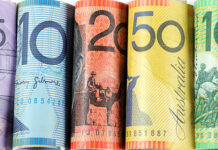Markets
Interpreting market moves feels familiar these days. Trading revolved around the dire evolution in the pandemic with little attention to mixed economic data. September US durable goods orders beat estimates (1.9% m/m vs. 0.5%). However, a gauge for capital investments (capital good shipments excluding aircrafts) disappointed slightly as did the Conference Board consumer confidence. Given the new semi-lockdownmeasures, we expect all scheduled releases for the time being to be considered outdated even before publication. We’ve seen a shock reaction on equity markets yesterday. European markets dived back into the red today. Losses aren’t as big as yesterday though. The intraday dip went as deep as -1.1% (EuroStoxx50) before paring about half of the decline as the European session evolved. Sentiment turned a bit more sour again with the coming of the US. Wall Street opened with minor gains but headed south shortly after. Core bonds gain with the Bund now trading in a more ‘straightforward’ way compared to yesterday. The German yield curve bull flattens with yields declining 2.2 bps (10-yr) to 2.4 bps (30-yr). Germany’s 10-yr yield trades near important support at -0.60% (May low). -0.614% (61.8% Fibo retracement March low-high) is then the next reference that prevents a steep drop lower to at least -0.68% from a technical point of view. Peripheral spreads trade unchanged with Greece (+4 bps) the exception. US yields retrace 1.6 bps (5-yr) to 2.2 bps (10-yr). The 10-yr yield (0.78%) is intensively testing support (upper bound of the broad 0.5/0.8% trading range).
On FX markets, Central-European currencies continued to trade on the back foot. Risk sentiment and local surges of the coronavirus push the likes of the Polish zloty in the defensive – although losses have bottomed in the meantime. EUR/PLN changes hands at 4.58, close to crucial resistance at 4.60. The Hungarian forint also hovers near recent lows with EUR/HUF filling bids in the 365.6 area, just shy of the key 366 level. EUR/CZK edges higher towards 27.32. The US dollar had a better morning while risk-off was building in equity markets but that didn’t last long. After briefly venturing north of 93, the trade-weighted greenback falls back at 92.91 currently. EUR/USD touched the 1.18 big figure in early European trading but recovered since. The pair is now selling at 1.1824, up from 1.181 at open. Sterling was an ocean of calm today. Brexit negotiations have been extended until tomorrow but it is hard to assess how talks are going currently with little news leaking. Markets are sidelined. EUR/GBP fluctuated within a narrow 0.906/0.908 trading range. A weaker dollar carries cable slightly higher towards 1.3045.
News Headlines
The ECB’s bank lending survey showed that EMU banks tightened access to corporate and household credit in Q3. Banks referred to the deterioration of the general economic outlook, increased credit risk of borrowers and a lower risk tolerance. Banks expect tightening to continue considerably in the final months of the year. Separate ECB data showed that lending to non-financial companies rose by 7.1% Y/Y in September, unchanged in June and slightly below the June high (7.3%). Lending to household grew by 3.1% Y/Y. EMU M3 money growth accelerated to 10.4% Y/Y, but that’s mostly a reflection of extremely easy monetary and fiscal policy.
The Turkish lira remains in free fall with EUR/TRY rising to 9.70 and USD/TRY 8.20. Both of them are all-time highs. Turkish FM Albayrak is trying to persuade international investors that the country’s economy nears a turning point with new investment flow on the horizon. He boasted that the new economic model proved itself with exports rising through a “sufficient competitive FX rate”. He also had to deny plans to impose capital controls. Today’s market moves prove that Turkey lost all of its credibility.












